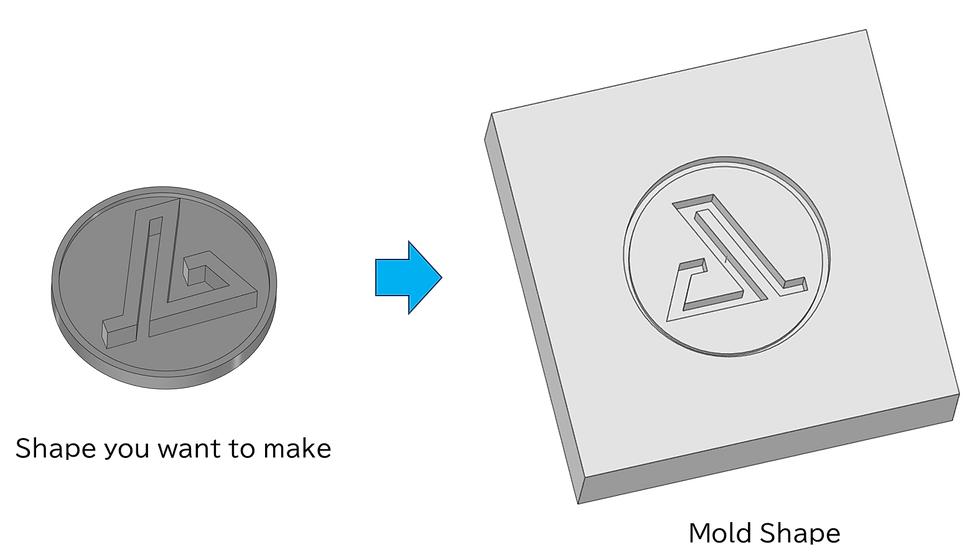Glossary: Principles and Benefits of Electrical Discharge Machining (EDM)
- SANKO GOSEI
- Jul 5, 2024
- 2 min read
Electrical Discharge Machining (EDM) is a type of metalworking, a process that uses electrical discharge to cut materials. This technique is useful for manufacturing parts made of hard materials and complex shapes.
For example, if you want to make a shape like the one on the left below, the die shape will look like the one on the right.
If the shape you want to make has a right angle, it cannot be machined with a general end mill. A narrower end mill can be used to get closer to a right angle, but this requires more setup man-hours and may cause damage to the workpiece.
In electrical discharge machining, the first step is to create the shape (master mold) that you want to make. This is created with a conductive material such as copper or graphite. (Graphite is preferred because of its low coefficient of thermal expansion.)
The master mold and the mold are electrically conducted and a very high current is applied. There is a minute gap between the electrode and the metal part, which generates an electrical discharge. This electrical discharge causes the tiny layers on the surface of the part to evaporate and melt, resulting in the scraping of the material.
On the other hand, it also has these disadvantages
Slow machining speed: EDM tends to have a slower machining speed than other general machining methods. This is because the amount of material removed by EDM is less than that of other machining methods.
Surface finishing required: The surface finish obtained by EDM tends to be rougher than that of some other machining methods, so additional finishing (polishing, etc.) may be required.
Electrode wear: During EDM, the electrode is shaved and wears out. This may require periodic replacement or remanufacturing of the electrode, resulting in reduced productivity.
Work environment: EDM requires coolant and precise control, which can make the work environment more complex and extensive than other processing methods.
Complex initial setup: The process setup, especially for the first time, is complex and requires a skilled operator. Also, depending on the processing conditions and materials, it may be difficult to adjust optimal parameters.
Cost: Initial investment in machinery and equipment can be high, and costs associated with electrode wear and handling must also be considered.
These disadvantages can be problematic for certain applications and conditions. However, the advantages of EDMs when machining hard materials and parts with complex shapes outweigh these disadvantages in many situations, and they are used frequently at our mold manufacturing sites.













Comments